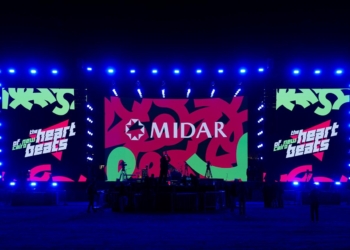Throughout human history, symbols serving protective purposes have played a vital role in shaping cultural beliefs, spiritual practices, and personal identities. These symbols—known as talismans—embody universal themes of life, death, and protection, transcending geographic and cultural boundaries. From ancient amulets to modern digital icons, the power of protective symbols remains a testament to humanity’s enduring desire for safety and resilience. Today, this symbolism extends beyond traditional contexts into the natural world and even the realms of modern gaming, illustrating how deeply ingrained these motifs are in our collective consciousness.
Contents
- The Symbolic Power of Nature’s Protective Talismans
- Mythological and Cultural Archetypes of Protective Symbols
- From Ancient Rituals to Modern Symbols
- Protective Symbols in Gaming: Bridging Tradition and Modern Mythology
- The Phoenix as a Modern Talisman of Protection and Rebirth
- Non-Obvious Dimensions of Protective Symbols
- The Interplay of Visual Elements and Symbolism
- The Future of Protective Symbols
- Conclusion
The Symbolic Power of Nature’s Protective Talismans
Natural symbols such as gemstones, plants, and minerals have long been associated with protective qualities. For example, turquoise has historically been regarded as a powerful talisman capable of warding off evil spirits and negative energies. Cultures across the globe—ranging from Native American tribes to ancient Egyptians—have attributed specific protective properties to natural elements. Amulets crafted from stones like jade, obsidian, or amber served as shields against harm, sickness, or malevolent forces. This widespread belief stems from the intrinsic qualities of these materials: their rarity, beauty, and perceived energetic properties, which influence human belief systems and spiritual practices.
Research in ethnobotany and mineralogy supports these cultural perceptions, showing that natural elements often symbolize life force, resilience, and protection. For instance, the vibrant blue of turquoise not only symbolizes sky and water but also embodies the idea of a protective barrier that keeps harm at bay. Such natural talismans continue to influence modern jewelry, art, and even digital iconography, reflecting their ongoing significance in human culture.
Mythological and Cultural Archetypes of Protective Symbols
The Battle Between Life and Death
Many cultures depict the struggle between life and death through symbolic narratives. For example, the Egyptian scarab beetle represented rebirth and protection in the afterlife, symbolizing the cycle of regeneration. In Greek mythology, the aegis—a shield associated with Zeus—embodied divine protection against chaos and evil. These symbols often serve as metaphors for resilience, safeguarding individuals or communities from existential threats.
Hooded Figures and Anonymity
Hooded figures, such as Grim Reapers or monks cloaked in darkness, symbolically represent the inevitability of death or the protection offered by anonymity. Their faceless presence often evokes a sense of universal protection—shielding personal identity while embodying a higher, often spiritual, form of safeguarding. In art and mythology, such figures serve as archetypes of both mortality and divine protection, reinforcing the idea that some forms of protection are beyond physical or visible means.
Comparative Analysis
Different cultures deploy a variety of symbols—such as the Chinese dragon, the Celtic knot, or the Norse Thor’s hammer—to signify protection. Despite variations in form, these symbols often share themes: divine power, resilience, and the safeguarding of life. Recognizing these archetypes highlights the universality of protective symbols, illustrating how they serve as psychological anchors and cultural identifiers across civilizations.
From Ancient Rituals to Modern Symbols
Historically, protective symbols have been integral to rituals and practices across civilizations. For instance, amulet wearing in Ancient Egypt, talisman carving in Mesopotamia, and ritualistic burying of protective stones in Europe all aimed to ward off harm. Over time, these tangible objects evolved into more abstract representations—such as symbols in art, literature, and media—reflecting changing social contexts and technological advancements.
Today, physical talismans are often replaced by symbolic motifs in digital environments. For example, the modern interpretation of turquoise has expanded from jewelry to digital icons representing protection and resilience. An illustrative case is the use of the www.phoenixgraveyard2.org/ 🥲 platform, where the phoenix symbolizes rebirth and protection, bridging ancient symbolism with contemporary storytelling.
Protective Symbols in Gaming: Bridging Tradition and Modern Mythology
Role of Talisman-like Symbols in Video Games
Video games have become a modern canvas for symbolic storytelling, often incorporating talisman-like objects to evoke protection and resilience. Items such as amulets, shields, or mystical symbols serve not only as gameplay mechanics—offering invulnerability or power-ups—but also as narrative devices that connect players to cultural archetypes. These symbols resonate because they tap into subconscious associations with safety and strength, making gameplay more immersive and meaningful.
Case Study: “Phoenix Graveyard 2”
In the game www.phoenixgraveyard2.org/ 🥲, the phoenix is a central symbol representing rebirth and protection. Players encounter this legendary creature as a guardian figure, embodying resilience against adversity. The game’s mechanics reinforce the phoenix’s symbolism—resurrecting from ashes after defeat mirrors the cultural motif of eternal renewal. This modern illustration exemplifies how ancient symbols adapt into digital narratives, reinforcing their protective qualities in contemporary contexts.
The Phoenix as a Modern Talisman of Protection and Rebirth
Mythological Origins
The phoenix, originating from Egyptian and Greek mythology, symbolizes renewal, immortality, and protection. Its myth involves rising from its ashes—representing the triumph over destruction and the safeguarding of life’s continuity. The phoenix’s fiery rebirth makes it a potent symbol of resilience, inspiring countless cultures and modern storytelling.
Modern Interpretations
In contemporary media, the phoenix embodies the enduring power of rebirth as a protective force. In games like www.phoenixgraveyard2.org/ 🥲, it signifies resilience against adversity and the hope of renewal after defeat. This aligns with psychological research suggesting that symbols of rebirth foster hope, motivation, and a sense of security during challenging times.
Non-Obvious Dimensions of Protective Symbols
Psychological Effects
Symbols of protection often operate subconsciously, providing reassurance and reducing anxiety. Psychological studies indicate that visual symbols—like shields or talismanic emblems—can activate internal perceptions of safety, fostering resilience even without conscious awareness. This phenomenon explains why people often keep meaningful objects close during stressful situations, whether in daily life or in virtual environments.
Identity and Community
Symbols serve as markers of group identity and shared values. Within gaming communities or cultural groups, protective symbols foster a sense of belonging and collective resilience. For example, clans or guilds may adopt specific emblems or talismans representing protection and unity, reinforcing social bonds through shared symbolism.
Lesser-known Symbols
Beyond widely recognized symbols, many subtle motifs convey protection—such as natural patterns in animal markings, or micro-symbols embedded in art and architecture. Recognizing these enhances our understanding of how protection is woven into the fabric of nature and media, often operating beneath conscious perception but maintaining cultural significance.
The Interplay of Visual Elements and Symbolism
Design Principles
Color, shape, and imagery are fundamental in conveying protection visually. For instance, warm colors like red and orange evoke energy and strength, while shield shapes and circular motifs symbolize wholeness and safety. In art and gaming, careful design choices—such as a hooded figure cloaked in dark tones—enhance the perception of mystery and protection, tapping into archetypal fears and hopes.
Examples from Art and Media
In visual storytelling, hooded figures like monks or death personified evoke protection through anonymity and spiritual authority. Natural stones like turquoise or obsidian are often depicted with intricate patterns emphasizing their protective energy. These elements create a visual language that immediately communicates safety, resilience, and mystical power.
The Future of Protective Symbols
Digital and Cultural Trends
As technology advances, the concept of talismans evolves into virtual and augmented reality objects. Digital symbols—such as icons, badges, or virtual amulets—offer new forms of protection and identity reinforcement. Cultural preservation efforts also aim to reintroduce traditional symbols into modern media, ensuring their relevance and reinterpretation for future generations.
Emerging Symbols
New symbols may emerge from the blending of cultural motifs and technological innovation. For example, in gaming, evolving visual languages might introduce symbols that combine ancient archetypes with futuristic aesthetics—further reinforcing the timeless human need for protection and resilience.
Conclusion
Protective symbols—whether rooted in nature, mythology, or modern media—serve as enduring anchors of human resilience. Their ability to communicate safety, strength, and rebirth transcends cultural boundaries, adapting to new contexts like digital worlds and gaming environments. Recognizing these symbols enhances our understanding of cultural continuity and personal identity, highlighting their vital role in shaping human resilience across ages. As modern storytelling continues to evolve, symbols like the phoenix exemplify how ancient motifs can inspire hope and protection in contemporary life.
الرابط المختصر: https://propertypluseg.com/?p=149446























